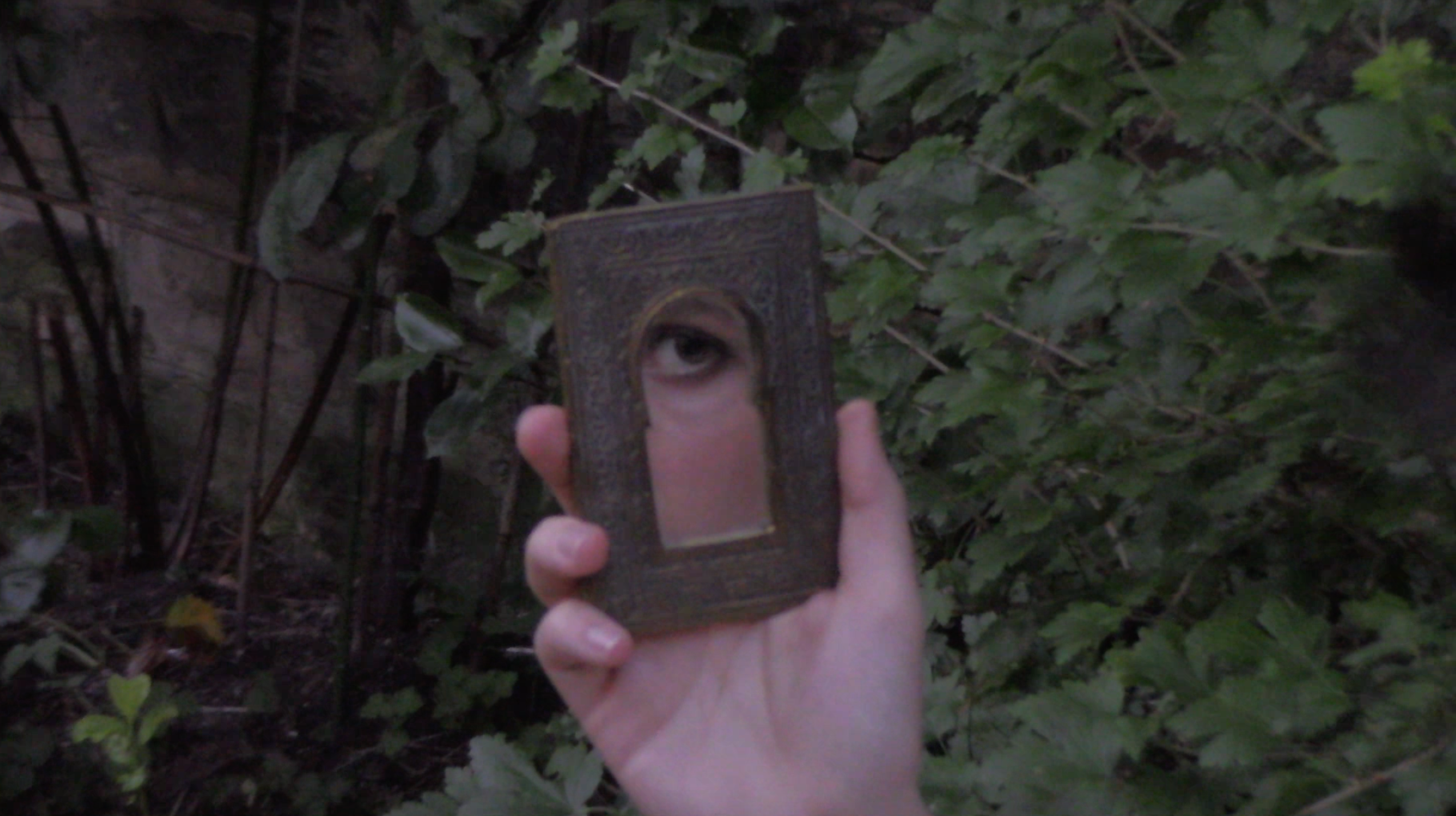 still from ‘A Garden Phenomenology’, film by Alix Villanueva, 2019.
still from ‘A Garden Phenomenology’, film by Alix Villanueva, 2019. on how we garden
I have a tendency to always return to gardens, in art and in life. I suppose the fascination stems from having grown up within the framework of a transient lifestyle, never staying anywhere long enough to build a place-based identity, let alone watch things take root, grow, die, invade, decompose… Perhaps this might indicate there is more to building our individual and collective identity than we think. Perhaps a large part of our humanity arises from an experience we share with almost all life on earth: an encounter with soil, water and a bit of sunlight.
Engaging actively and attentively with a garden makes me feel like I am getting acquainted with a place, and with its various inhabitants, human and non-human. I see it as an intimate act, as a desire to find connectivity with what’s under the bitumen, with the millions of microbes that thrive in the soil, with the mycelium that stretch across the land, with what’s already there. I am speaking to the ghosts of what was and the manifestations of what will be, simultaneously partaking in the ancestral practices that have shaped how we garden today and contemplating the future of these acts as we try to shape better ways of existing and co-existing on this Earth.
Alongside the abundant vegetables and courteous blooms that it offers, the Garden exposes the Grotesque that comes with and after life – as the compost juices splash onto my cheek and the unforgettable stench of ‘nettle tea’ reaches my nose. It fractures my dichotomous thinking: clean and dirty, good and bad, beautiful and ugly… these things don’t seem to carry much sense in this space. Gardening, for one, has taught me that bacteria are essential to life, for the role they play in the nitrogen and carbon cycle and in the breaking down of waste, as well as the development of our immune systems. Gardening has taught me that ‘Weed’ is not a category in its own right, but a made-up group in which to clump every plant that does not grow in the place the gardener intended it to. I have since taught myself to garden with intent – to question my acts and find the right balance between myself and the other actors that constitute the space.
To conceptualise gardens as peaceful spaces, is to only consider them from the height of our own noses. We may be able to enjoy a bask in the sun on a chaise longue, but we must not forget that each participant is constantly active in forging a place for themselves: whether it is us, digging up the couch grass for a crop of radish; the little robin waiting for you to move so he might eat the worm poking out of the disturbed soil; Sambucus nigra, as it shoots out another sapling to tower over the other plants; the opportunist slug waiting for you to go to sleep to commence a feast… But the violence of gardens extends as well to their social histories. Thinking about the Black Lives Matter movement has brought me to consider the many ways in which the histories of gardens are informed by colonial practices. Take for instance the ways in which exotic species were collected during colonial expeditions to be displayed in botanical gardens. The remnants of this practice are evidenced in the many non-native invasive species cropping up across the UK, in places as remote as the Outer Hebrides. The fact that we might choose to plant an exotic over letting the hogweed stand in the place it is already growing evidences the enduring fascination we hold for exoticism. Consider also the way we have named and categorised living things, created order and control through our nomenclatures. And of course, one must acknowledge the ways in which gardening can be seen as an extension of man’s perceived right to control and structure his environment.
With this in mind, I tend to lean towards the less tidy gardens, the ones that have unruly margins that invite insects into their folds, and the birds that follow. I tend to find value in resourceful gardening practices. Those that acknowledge what is already there and work alongside it, celebrate it. Those that playfully incorporate domestic objects into their gardening apparatus. Gardens are the perfect microcosm in which we might devise new, fruitful ways to interact with our environment.
Alix Villanueva
